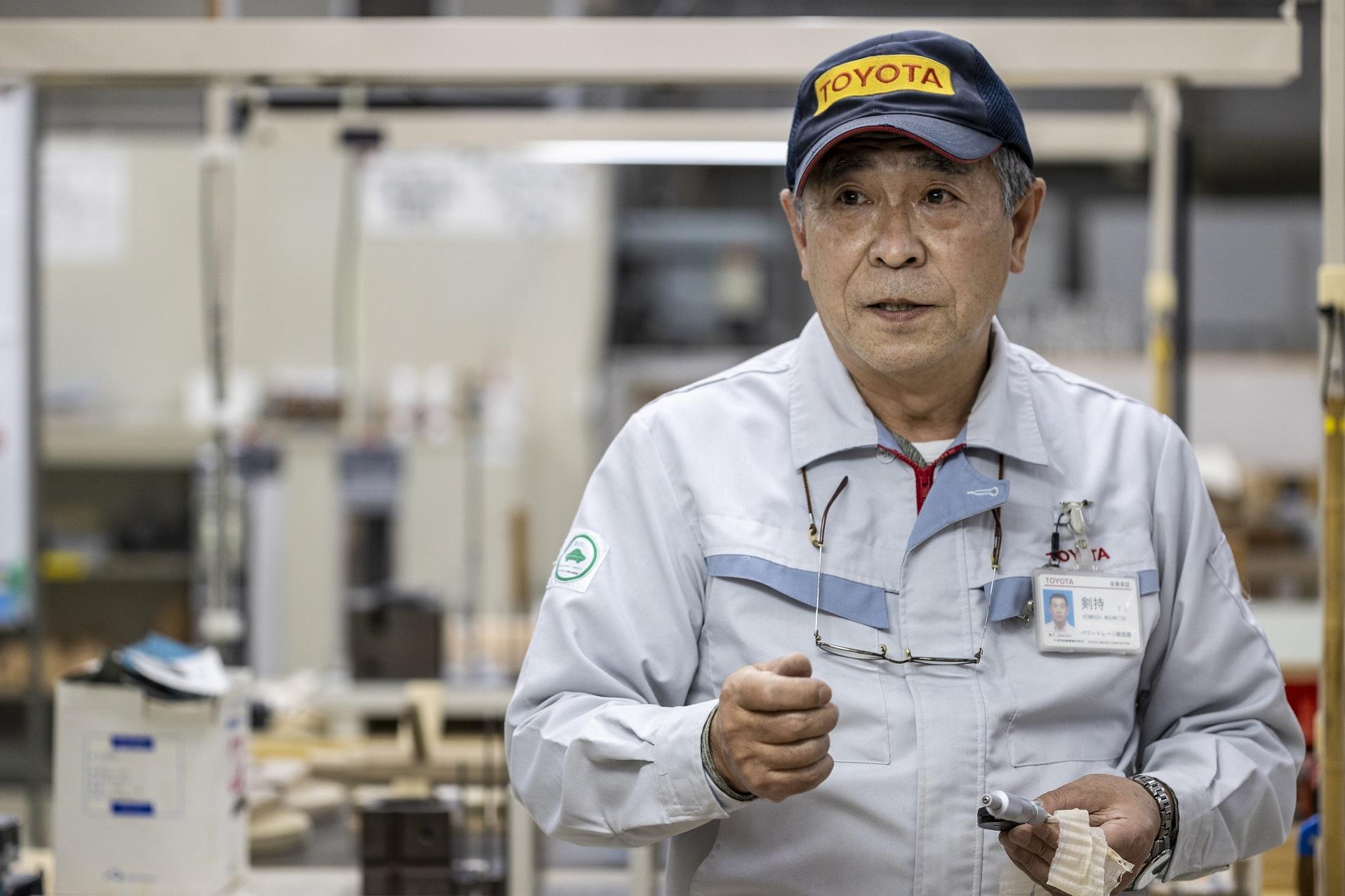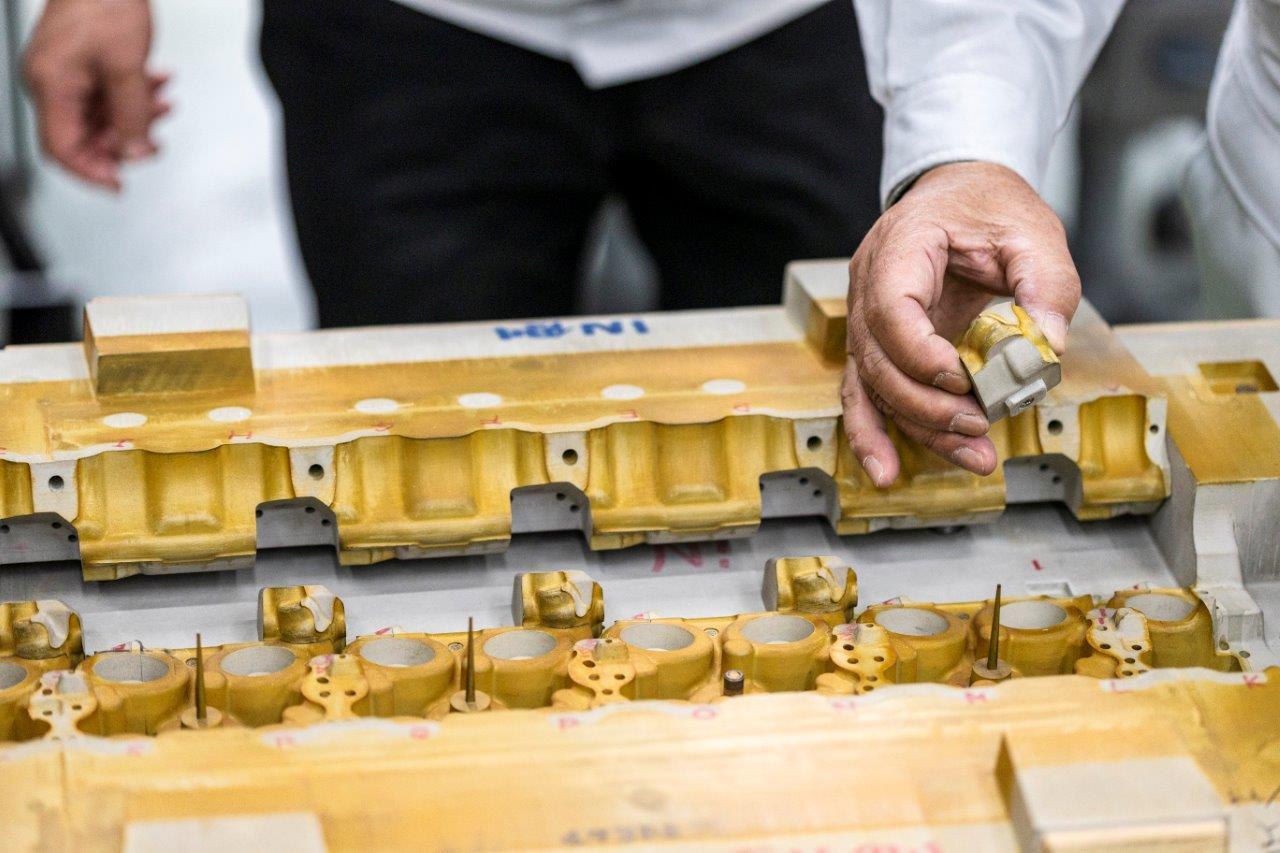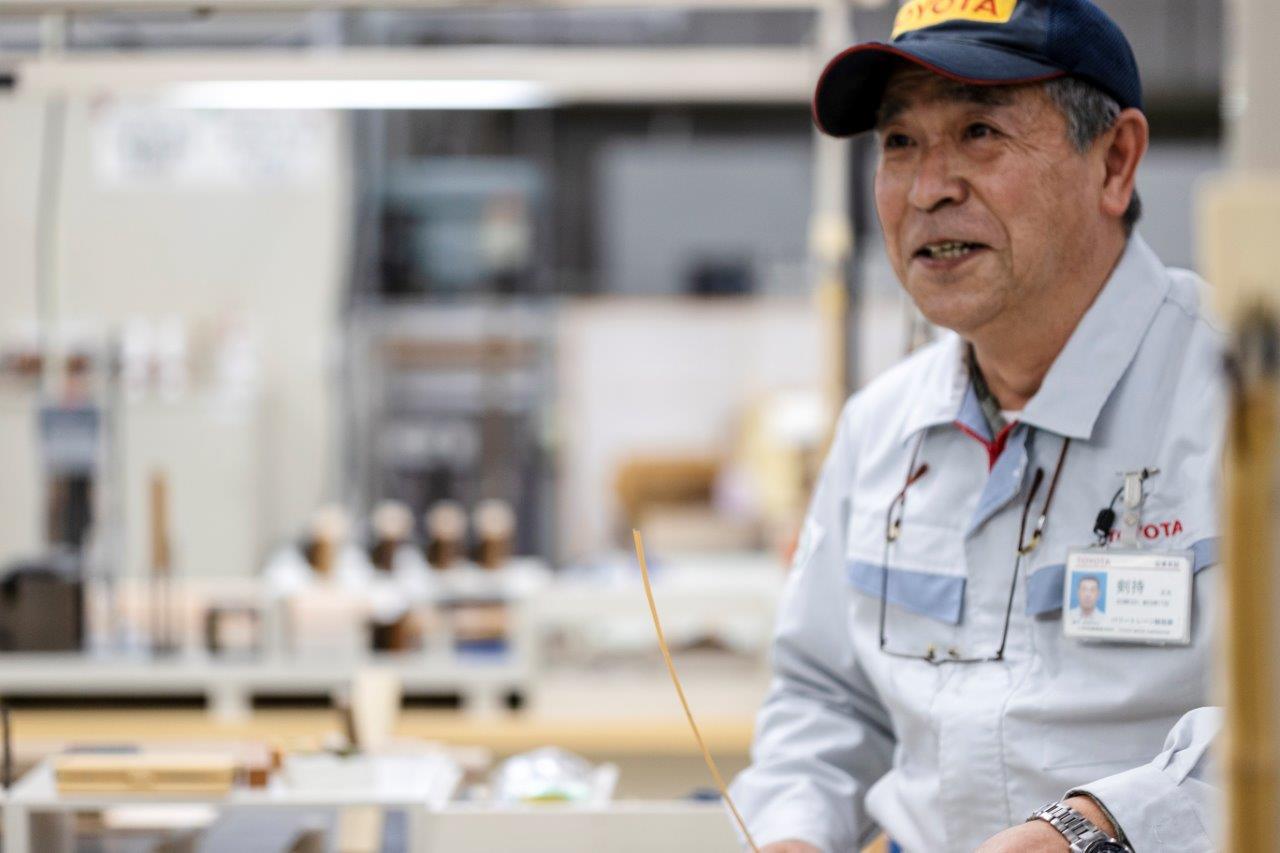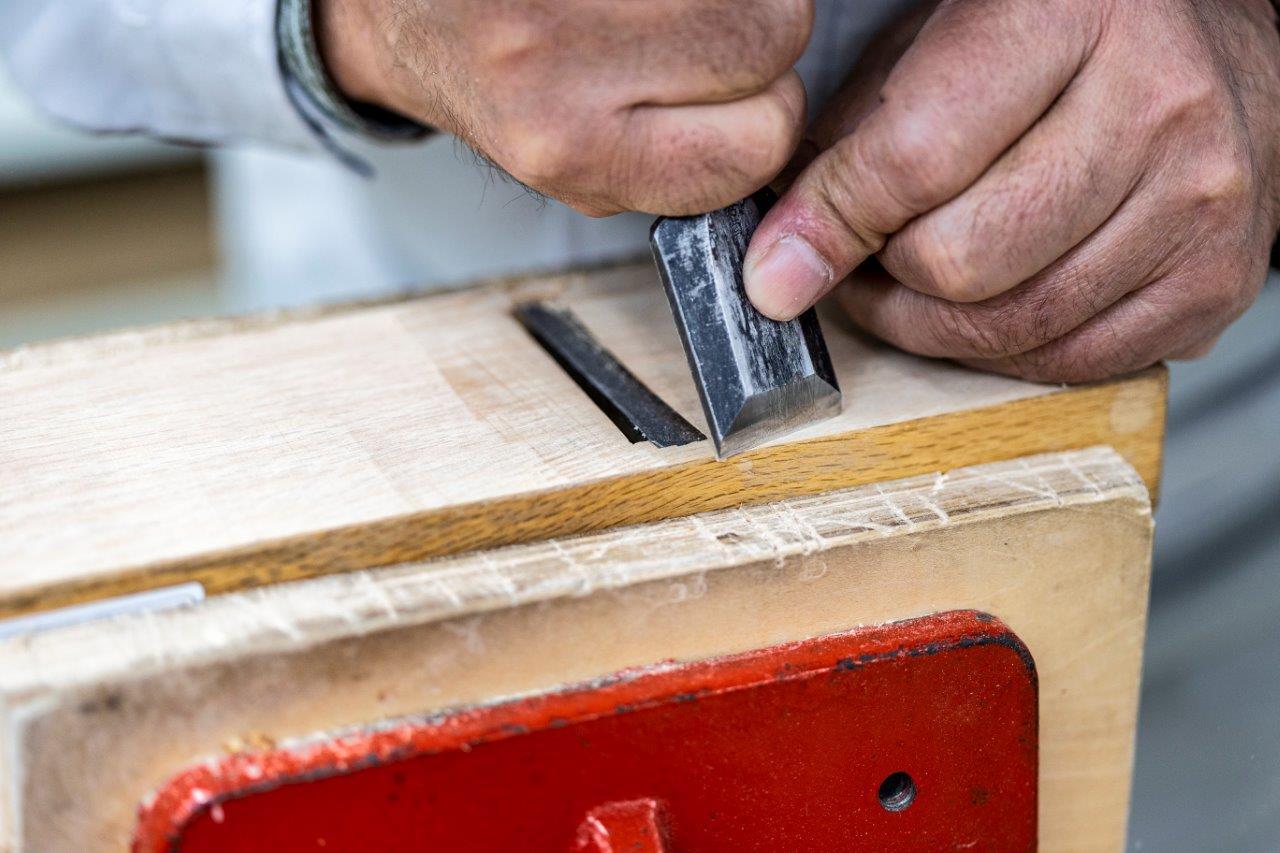
Toyota Times uncovers the essence and core strength of the traditional Japanese monozukuri, which is woven from the past into the future. The first interviewee is a master woodworker who also has experience working on motorsports engines.

While many people pay attention to advanced technologies such as 3D printers and AI when it comes to making something new, there are lots of handmade work remaining in the front lines of making cars.
In this series, by interviewing some of the masters supporting Toyota’s manufacturing with their craftsmanship, Toyota Times uncovers the essence and core strength of the traditional Japanese monozukuri (making things), which is woven from the past into the future.
The first interviewee is Masamitsu Kenmochi, a master woodworker who also has experience working on motorsports engines.

Series #1 Masamitsu Kenmochi, a master woodworker who also worked on motorsports engines
Senior Expert (SX) at Powertrain Administration Dept., Powertrain Management Div., Myochi Plant, Toyota Motor Coporation
Pursuing 1/100 accuracy
Wood is rarely used in cars except for some interior parts. Most body and engine parts are made of metal. Generally, the body and engine are made using pressing work and casting, respectively.
However, there is a great craftsperson specializing in wood processing work for Toyota. He is a wooden mold craftsperson (also known as a creative modeler in English), who makes ideal wooden molds that are used as casts for main engine parts including engine blocks, cylinder heads and crankcases, with no more than a 1/100 mm margin of error.
His name is Masamitsu Kenmochi. He is 62 years old, and he works at the Toyota Motor Corporation Myochi Plant where engine parts are manufactured.
Born in Niigata Prefecture, and a graduate of Toyota Technical Skills High School (currently Toyota Technical Skills Academy), he has been working on wooden molds since he was in school, and has participated in the Skills Olympics, where he competed in wooden mold making techniques nationwide. He has been working almost exclusively as a wooden mold craftsperson since he graduated from school and joined Toyota Motor Corporation in March 1977.
As mentioned above, engine blocks and various other parts used in cars are made using the casting method. Casting is a processing method in which a metal, such as iron or aluminum alloy, is heated at a high temperature, melted and then poured into a sand mold to be made into a boilerplate for parts. A wooden mold is what is needed to make this boilerplate.
To be more specific, a wooden mold that is identical to the desired part is embedded in the sand and after the sand is firmly compacted, the wooden mold is removed. This becomes the boilerplate, and when molten metal is poured into where the wooden mold used to be and cooled down, the metal solidifies into that shape. Break the sand-made boilerplate and you have a metal part that is identical to the wooden mold.
Thus, the shape and degree of accuracy of the parts are determined by the original wooden mold. This is the job of the wooden mold craftsperson.
Kenmochi has been in charge of fabricating wooden molds for engine parts installed in world-class racing cars that have performed in the world’s leading races, such as the Toyota F1 project (in which Toyota was fully involved in Formula One between 2002-2009), the Indianapolis 500 (one of the three biggest races in the world) and the FIA World Endurance Championship (WEC), including 24 Hours of Le Mans.
He also made the wooden mold for the prototype engine for the production car and 4A-G prototype engine installed in the AE86 series Corolla Levin and Sprinter Trueno, famous vehicles in Toyota's history.

Currently, Kenmochi is instructing the younger generation in order to pass on his wooden mold making skills to the future, an indispensable aspect for making parts by casting.
Engines can’t be made without wooden molds. Even though engines are mass produced by automated machines, wooden molds are essential parts of the master model for the prototype.
Moreover, since the accuracy of each part is directly linked to the power and fuel efficiency of the engine, the margin of error must not exceed 1/10 mm. The wooden mold, which is the prototype, must be completed with the same precision.
Nowadays, it is more common to shape wooden molds with resin rather than wood. However, Kenmochi quietly suggests that it’s also important to pass down how to make molds out of wood to the future generation, since that is the origin of casting.

Immediately visualizing the solid object based on the blueprint
“The first job of a wooden mold craftsperson is to read the drawings (blueprints). Then look at the two-dimensional drawing and immediately visualize it as a three-dimensional solid object in your head. This skill is essential to making wooden molds. Without this skill, you’re not truly reading the drawing. It took me about 10 years to be able to do this,” says Kenmochi.
Kenmochi reads the blueprints and catches the designer’s hidden intentions while visualizing the final shape of the desired parts as a three-dimensional object. However, that isn’t enough to start making the wooden mold, because there are some blank spots omitted in the drawing.
The drawing is a two-dimensional abstraction of the solid object and not a complete image. In the blueprint, some parts are purposefully omitted because the designer can’t visualize or know how to incorporate them into the drawing. The job of the wooden mold craftsperson is to fill in these blanks and make it into a three-dimensional object.
Kenmochi says, “I get frustrated when I see drawings with missing elements. We can’t make a wooden mold without them. Production can’t move forward. This is when I meet with the designer of the drawing to discuss the missing elements and confirm that our interpretations agree. Often, they just leave it up to me.”
This demonstrates how much the designers trust Kenmochi.
You have to do more than just follow the drawing
The first job of a wooden mold craftsperson is to read the drawings, mentally supplement any missing elements, and clearly visualize the necessary wooden mold.
When people think of a wooden mold craftsperson, many people imagine someone like a carpenter who carves wood with a chisel or a plane. However, Kenmochi argues that 80% of their work is to thoroughly visualize the final product, while carving or shaving the wood is only 20%.
“The hardest part of this job is the step before the actual work. I have to imagine how and what the shape will be until I can actually visualize it as a three-dimensional solid object in my head. When I started this job, my seniors used to tell me that I shouldn’t stop thinking about wooden molds even while I slept. I thought that was impossible, but now I understand that they meant I shouldn’t sleep until I have figured it out,” says Kenmochi as he chuckles.

By the same token, you can’t make wooden molds by simply following the drawings. Parts with complicated shapes and structures, such as the cylinder head of an engine, must be designed so that the wooden mold can later be separated into pieces from the boilerplate. If the part is hollow inside, you must make a wooden mold that produces that hollowness.
Also, the metal used for the engine shrinks after it’s poured into a sand mold and hardened. The amount of shrinkage depends on the type of metal and its composition. The wooden mold must be made with no more than a 1/100 mm margin of error with shrinkage taken into account.
In general, wooden molds are made slightly larger than the blueprints. However, the shrinkage rate may change both vertically and horizontally depending on the material, so this needs to be taken into consideration during the process.
For this purpose, it is essential to communicate closely with the foundry craftsperson, who is both familiar with the types and compositions of the metal, and oversees every step of producing the parts, including making the mold, pouring molten metal and perfecting the final cast parts.
In addition, the material used for the wooden molds also expands and contracts with humidity and temperature. Therefore, the dimensions change slightly even during production. The wooden mold craftsperson must take these changes into consideration during wooden mold making.


Kenmochi says, “First, when I read the drawing, I check the necessary metal materials. There are many aspects of wooden mold making that are unquantifiable, so you can’t simply follow the drawing. Wooden mold making is ‘monozukuri beyond the drawing.’ If you can’t do that, then you can’t produce good parts or products. I’m most happy when I take on the challenge and succeed in monozukuri that no one could have done before.”

